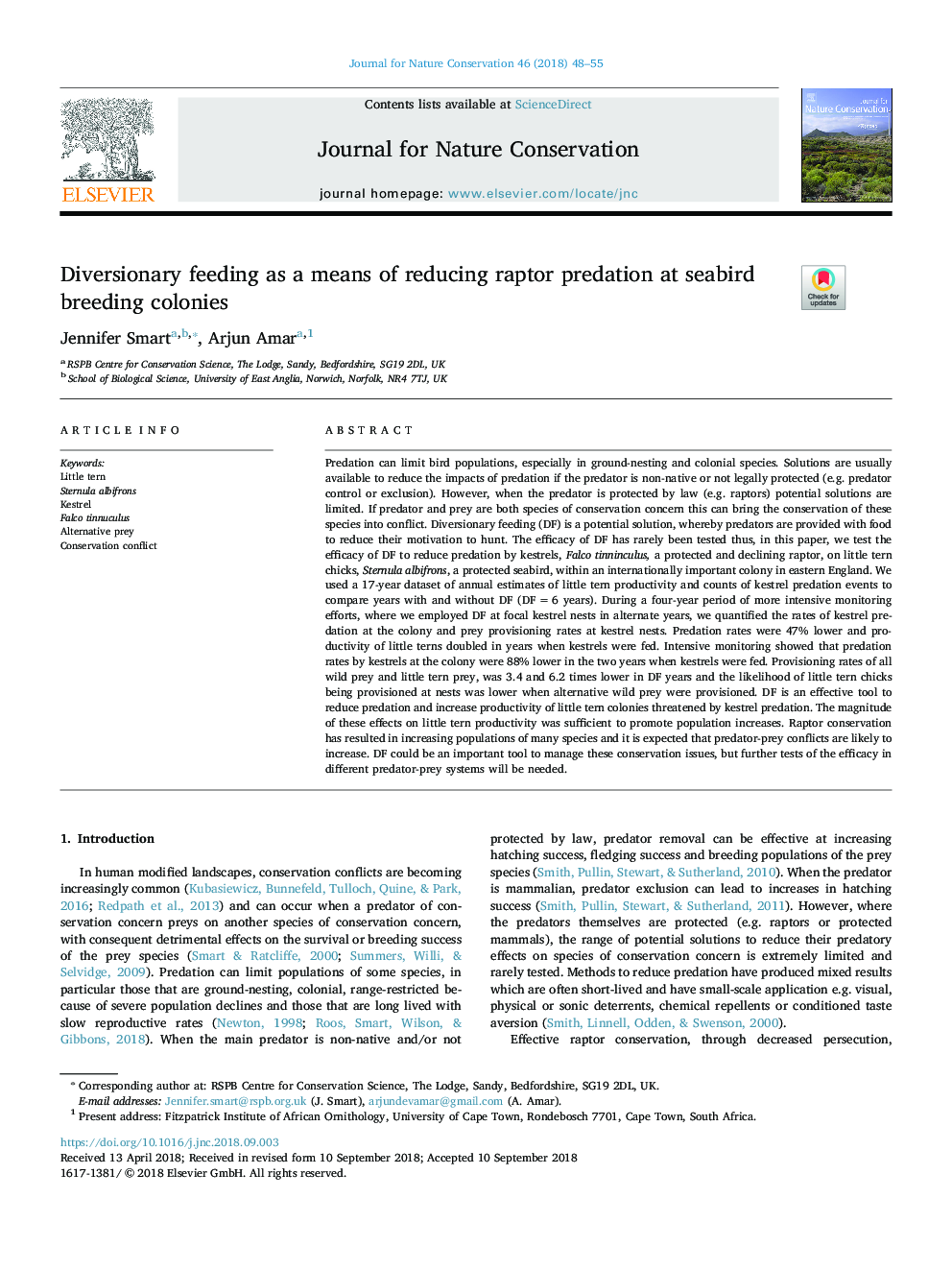| کد مقاله | کد نشریه | سال انتشار | مقاله انگلیسی | نسخه تمام متن |
|---|---|---|---|---|
| 10223381 | 1701027 | 2018 | 8 صفحه PDF | دانلود رایگان |
عنوان انگلیسی مقاله ISI
Diversionary feeding as a means of reducing raptor predation at seabird breeding colonies
ترجمه فارسی عنوان
تغذیه تناوبی به عنوان وسیله ای برای کاهش شکار رپتور در پرورش مستعمرات دریایی
دانلود مقاله + سفارش ترجمه
دانلود مقاله ISI انگلیسی
رایگان برای ایرانیان
موضوعات مرتبط
مهندسی و علوم پایه
علوم زمین و سیارات
علوم زمین و سیاره ای (عمومی)
چکیده انگلیسی
Predation can limit bird populations, especially in ground-nesting and colonial species. Solutions are usually available to reduce the impacts of predation if the predator is non-native or not legally protected (e.g. predator control or exclusion). However, when the predator is protected by law (e.g. raptors) potential solutions are limited. If predator and prey are both species of conservation concern this can bring the conservation of these species into conflict. Diversionary feeding (DF) is a potential solution, whereby predators are provided with food to reduce their motivation to hunt. The efficacy of DF has rarely been tested thus, in this paper, we test the efficacy of DF to reduce predation by kestrels, Falco tinninculus, a protected and declining raptor, on little tern chicks, Sternula albifrons, a protected seabird, within an internationally important colony in eastern England. We used a 17-year dataset of annual estimates of little tern productivity and counts of kestrel predation events to compare years with and without DF (DFâ=â6 years). During a four-year period of more intensive monitoring efforts, where we employed DF at focal kestrel nests in alternate years, we quantified the rates of kestrel predation at the colony and prey provisioning rates at kestrel nests. Predation rates were 47% lower and productivity of little terns doubled in years when kestrels were fed. Intensive monitoring showed that predation rates by kestrels at the colony were 88% lower in the two years when kestrels were fed. Provisioning rates of all wild prey and little tern prey, was 3.4 and 6.2 times lower in DF years and the likelihood of little tern chicks being provisioned at nests was lower when alternative wild prey were provisioned. DF is an effective tool to reduce predation and increase productivity of little tern colonies threatened by kestrel predation. The magnitude of these effects on little tern productivity was sufficient to promote population increases. Raptor conservation has resulted in increasing populations of many species and it is expected that predator-prey conflicts are likely to increase. DF could be an important tool to manage these conservation issues, but further tests of the efficacy in different predator-prey systems will be needed.
ناشر
Database: Elsevier - ScienceDirect (ساینس دایرکت)
Journal: Journal for Nature Conservation - Volume 46, December 2018, Pages 48-55
Journal: Journal for Nature Conservation - Volume 46, December 2018, Pages 48-55
نویسندگان
Jennifer Smart, Arjun Amar,
